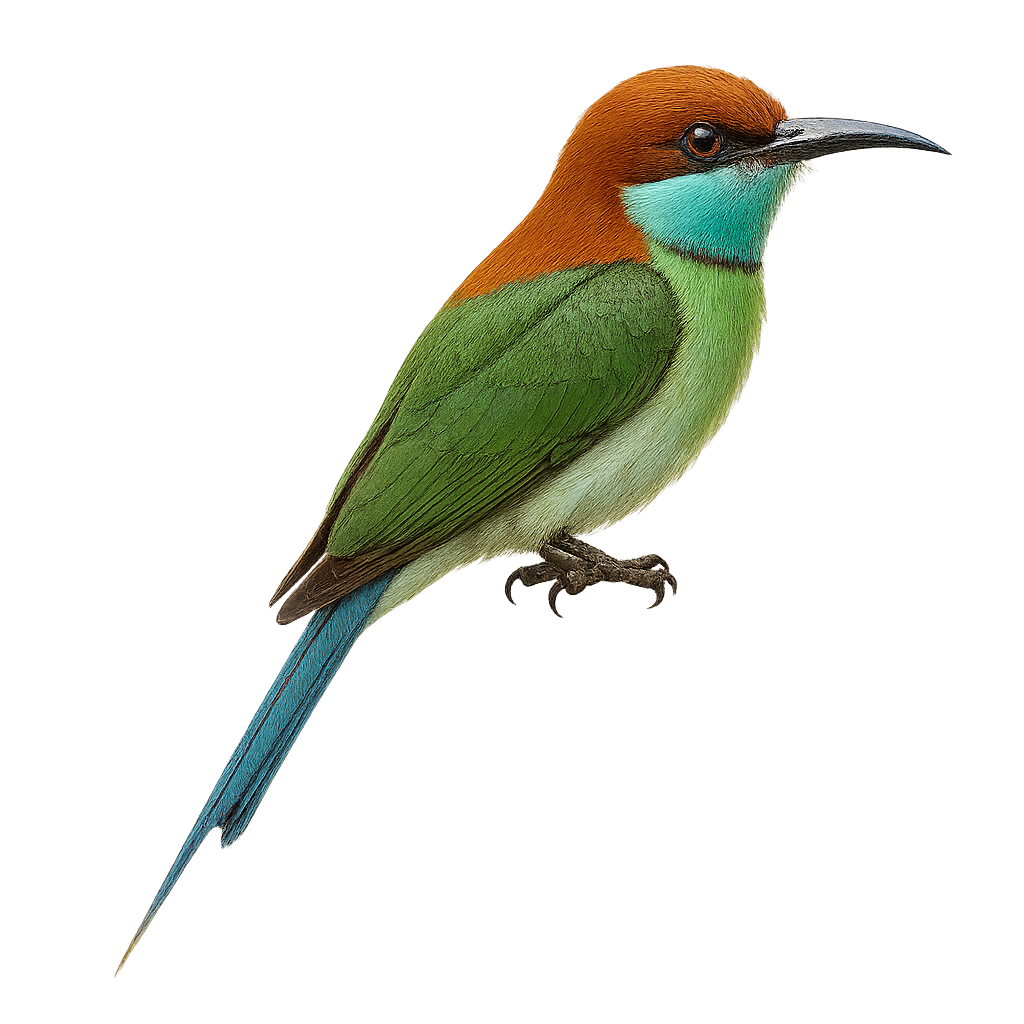Your wildlife photography guide.
Explore the rufous-crowned bee-eater in detail, study its behavior, prepare your shots.
Where to observe and photograph the rufous-crowned bee-eater in the wild
Learn where and when to spot the rufous-crowned bee-eater in the wild, how to identify the species based on distinctive features, and what natural environments it inhabits. The WildlifePhotographer app offers tailored photography tips that reflect the rufous-crowned bee-eater’s behavior, helping you capture better wildlife images. Explore the full species profile for key information including description, habitat, active periods, and approach techniques.
Rufous-crowned Bee-eater
Scientific name: Merops americanus

IUCN Status: Least Concern
Family: MEROPIDAE
Group: Birds
Sensitivity to human approach: Suspicious
Minimum approach distance: 10 m
Courtship display: February to March
Incubation: 20-22 jours
Hatchings: February to April
Habitat:
Open forests, savannas, agricultural areas
Activity period :
Primarily active during the day, with peak activity in the morning and late afternoon.
Identification and description:
The Rufous-crowned Bee-eater, or Merops americanus, is a colorful and fascinating bird known for its vibrant plumage and social behavior. It features bright feathers in shades of green, blue, and yellow, with a long, curved beak ideal for catching insects in flight. This bird is often seen in groups, nesting in colonies on sandy banks. It primarily feeds on bees and wasps, which it skillfully captures. The Rufous-crowned Bee-eater is a migratory bird, traveling long distances between its breeding grounds and wintering areas. It is appreciated for its beauty and its role in controlling insect populations.
Recommended lens:
400mm – adjust based on distance, desired framing (portrait or habitat), and approach conditions.
Photography tips:
To photograph the Rufous-crowned Bee-eater, choose sunny mornings when natural light highlights its vibrant colors. Use a 400mm lens or longer to capture detailed images from a distance. Be patient and discreet, as this bird can be suspicious. Look for colonies near sandy banks where they nest. A tripod can be helpful to stabilize your camera and achieve sharp shots. Take advantage of moments when they hunt in flight to capture dynamic scenes.
The WildlifePhotographer App is coming soon!
Be the first to explore the best nature spots, track rutting seasons, log your observations, and observe more wildlife.
Already 1 439 wildlife lovers subscribed worldwide

